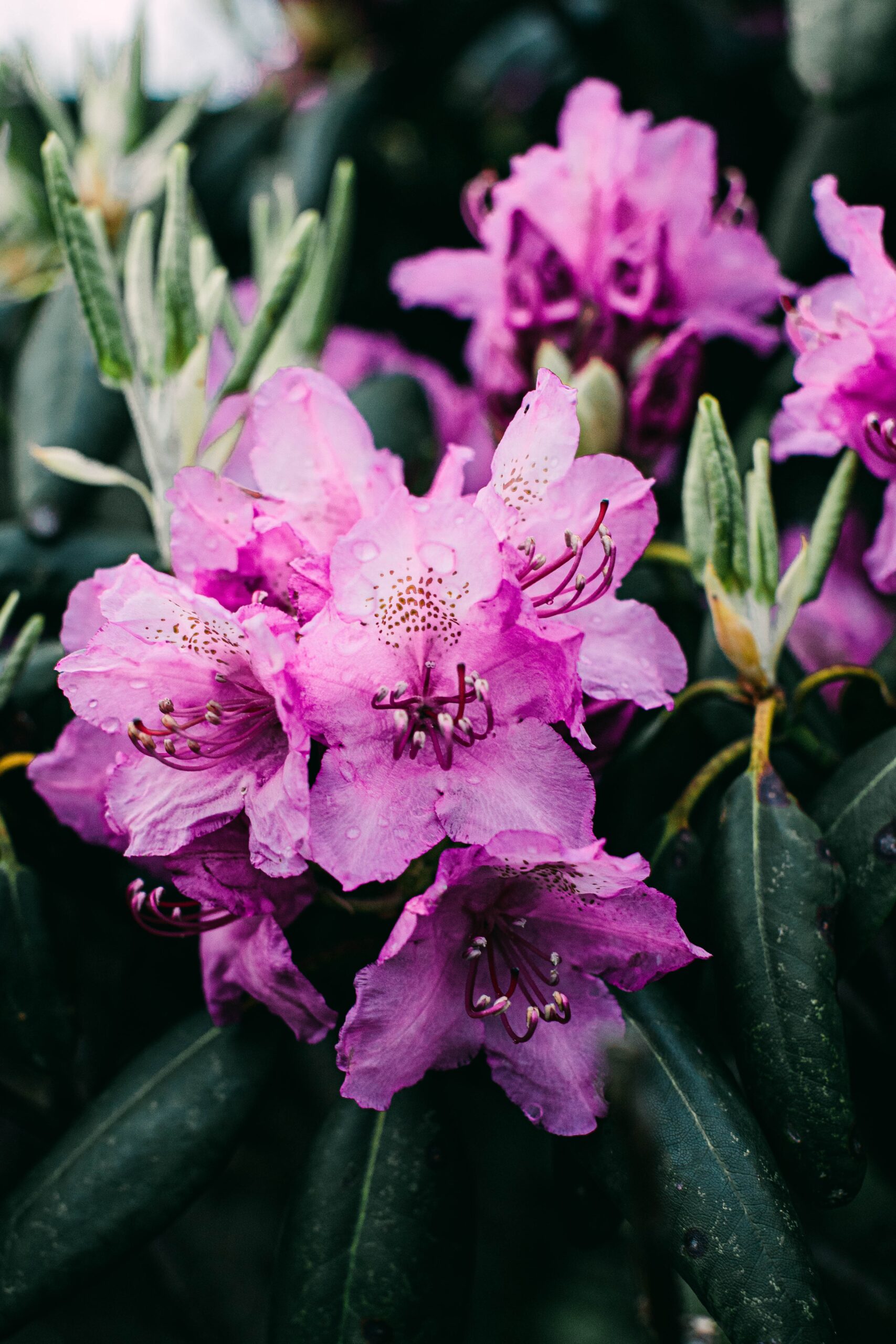
Rhododendrons, the beloved flowering shrubs, have gained immense popularity. With a vast array of vibrant rhododendron cultivars available, you can find the perfect fit for larger gardens or even containers. These cultivars come in various sizes, ensuring there’s a suitable option for every space.
The beauty of rhododendrons lies in their stunning blooms. From elegant and abundant pinks and purples to fiery shades of red, orange, and yellow, these flowers are guaranteed to create a magnificent display in early summer. However, to witness their full splendor, it’s crucial to provide the appropriate acidic growing conditions.
While many rhododendron varieties are evergreen, offering year-round foliage, there are also deciduous options that add a touch of autumnal charm. These deciduous rhododendrons contribute to the overall appeal of your garden by showcasing delightful autumn colors.
It’s common to find rhododendrons and azaleas growing side by side. Previously classified as separate species, they now belong to the same Rhododendron genus. These plants share numerous characteristics, yet there are subtle distinctions that set them apart.
- Rhododendrons can be either evergreen or deciduous, while azaleas are always evergreen.
- Rhododendron leaves are thick and leathery, while azalea leaves are thin and often have fine hairs.
- Rhododendron flowers typically have 10 or more stamens, while azalea flowers have five to six stamens.
- Rhododendron flowers grow in large clusters called “trusses,” while azalea clusters usually consist of around three flowers.
- Rhododendrons generally have fewer stems compared to azaleas.
How to grow rhododendrons
Rhododendrons are perfect for growing at the edge of a woodland border or shady spot. Plant them in humus-rich acidic soil in a sheltered spot in partial shade or full sun. Mulch rhododendrons annually and water well with rainwater.
While unlikely, if ingested by pets, all parts of azaleas and rhododendrons cause nausea, vomiting, depression, difficulty breathing and even coma. They can be fatal to dogs if eaten in large enough quantities.
Rhododendron: plant profile
Botanical name: Rhododendron
Common name: Rhododendron
Plant type: Shrub, Evergreen
Flower colours: Pink, purple, red, orange, yellow
Plant in: March-April, September-December
Flowers in: April-July
Take cuttings: July-August
Prune in: March
Sun exposure: Full sun, dappled shade, partial shade
Hardiness: Hardy
Soil type: Well drained / light / sandy / clay / heavy / moist / acidic
Wildlife: Known for attracting bees
Toxicity: Can be toxic to cats, dogs, horses and livestock
Preferred growing conditions vary slightly depending on the variety.
Where to plant rhododendrons

Grow rhododendrons only if you have neutral to acidic soil – use a test kit to measure the pH of your soil and check neighbouring gardens to see if rhododendrons or other acid-loving plants grow well in your area. Then, chose a sheltered spot in partial shade to full sun. Many rhododendrons suit planting at the edge of a woodland border or shady area. Dwarf alpine rhododendrons work well in rock gardens. Smaller varieties look best at the front of a border, or in pots.
How to plant rhododendrons
All rhododendrons require humus-rich, neutral to acidic soil that’s moist but well-drained. Use peat-free ericaceous compost for pots. Rhododendrons are shallow-rooted plants, so make sure the roots are just below the soil’s surface. Dig a hole that’s wider than it’s deep and back fill with leaf mould and peat-free ericaceous compost. Water well.
How to care for rhododendrons

Mulch rhododendrons in borders annually with an acidic mix of leaf mould, peat-free ericaceous compost or conifer bark chippings. For container-grown rhododendrons, replace the top layer of compost with fresh peat-free ericaceous compost, or repot completely in spring and feed with an ericaceous fertiliser. Water with rainwater as much as possible – tap water might contain too much calcium. There should be little or no need to prune, but deadheading spent blooms after flowering can improve the appearance of your shrub.
How to propagate rhododenrons

Species rhododendrons can be grown from seed, but cultivars should be propagated from cuttings and layering. Take heel cuttings of rhododendrons in late summer and autumn. Layering rhododendrons involves taking a low-growing branch and pegging it to the ground so it can take root. This is best done in late-summer.
Growing rhododendrons: problem solving

There are no pests affecting rhododendrons. However, the fungal disease rhododendron leaf spot can affect the leaves, causing them to drop.
Rhododenron ponticum is on the invasive plant list, so should not be planted in gardens and should be removed where possible.
Why has my rhododendron died?
Rhododendrons sometimes succumb to over-watering. Too much water around the rootball prevents the roots from being able to take up vita nutrients and can, effectively ‘suffocate’ the plant. However, under-watering can also kill rhododendrons. Their roots are shallow, meaning they don’t have a large tap root with which to draw water up from deep in the soil. Other reasons for sick or dead rhododendrons include planting too deeply (remember rhododendrons are shallow-rooted) and applying too much fertiliser.